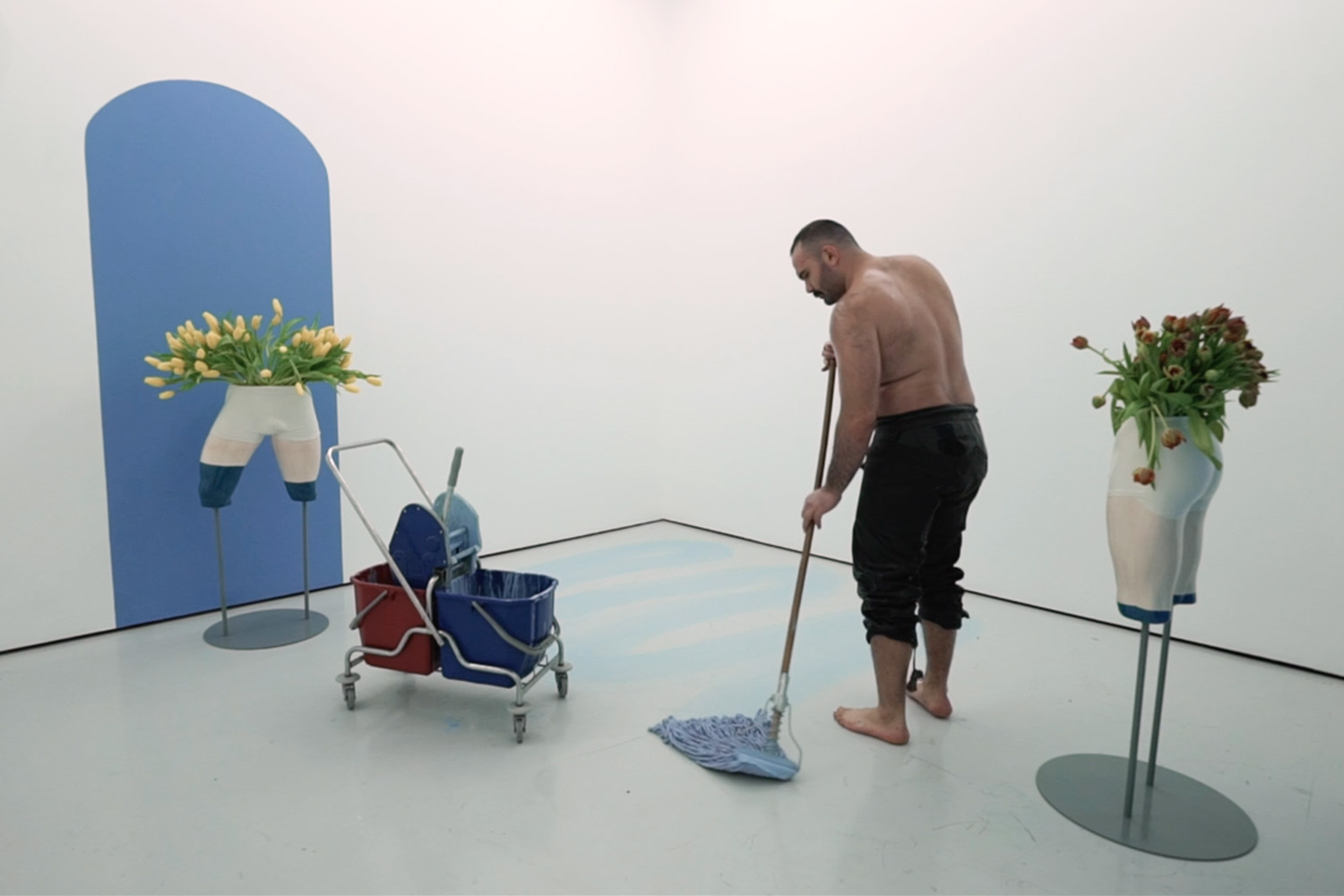The Little Prince’s Body by Soufiane Ababri
The striking perspective he brings to the male body, the realism in his drawings, and his unmistakable presentation of his political point of view, maximize our interest in Moroccan artist Soufiane Ababri. His exhibition titled ‘The Little Prince’s Body’ at Berlin’s DITTRICH & Schlechtriem Gallery is the perfect reason for us to return to Soufiane’s gravitational field… We are blending with the colours and getting more involved with today’s cultural deprivation among the figures of masculinity.

You display a very realistic world in your works. How much importance do you think observation has in your creation process?
It all starts with the observation of things that surround me. But this is about the problematization of my experiences … At this stage of observation, I try to understand and analyze what surrounds us. I prefer a very sociological way to understand every event. I also examine the relationship between social history and the severity of social history.

For me, the definition of masculinity is the moment when it loses the game of social appearance.
The theme of your exhibition ‘Here is a Strange and Bitter Crop’ was particularly impressive. Do you think it is more effective to give social messages directly in your works for the audience?
The exhibition took its name from Billie Holiday’s lyric “Here is a Strange and Bitter Crop” in the song “Strange Fruit” written about the hanging of African American people on the trees in the Southern part of North America. A passage of American author Marie Angelou’s book, “The Heart of a Woman’, says that a friend cannot pass through the trees used for execution. I would like to use my work not only to convey a harsh social message but to point out that some people are haunted by social events like this.It is impossible for these people to see the world in any other way, to perceive neutral.Especially in the history of art, this situation is even more difficult, and my works are shaped by this idea.
We are in a world where aesthetic perfection is at the forefront. Surrounded by social media, cosmetics and perfectness… You offer a very realistic world especially in your project, ‘bed work’. Do you especially prefer this?
Yes, my works are always connected to the social realism bu it is wanted from me that I have my feet on the real world. It seems to me that the world is not so monotonous… When I think about what social media is or what Facebook is for, there are completely different examples. The Arab Spring, what is happening in Lebanon now, how the Internet is a bubble of communication for marginalized communities living in remote areas of the world, and that all of these things aesthetic based on improvisation impresses me.
We find your description of the pink cheeks you draw on the male figures very poetic .Do you still show the more fragile and erotic dilemma with these cheeks?
Yes, masculine figures are the majority in my works. Firstly, this masculinity, which is noticed by very specific muscle lines or sports clothes, is shaken by their position or interaction. This certainly leads to a superficial reading. What all these guys have in common are their pink cheeks. For me, when you blush publicly in front of someone or everyday life, is the moment the body loses its control. So for me, the definition of masculinity is the moment when it loses the game of social appearance.
What kind of a project are you working on right now?
I finished my new project that I exhibited in Berlin. The project is called “Something new under the little prince’s body”, it is inspired by Saint-Exupery’s Little Prince. Especially where the Little Prince came to the planet earth, to the Sahara Desert. My starting point is how he comes to this part of North Africa and doesn’t meet anyone who lived there before. Then I focused on the possibility of the Little Prince meeting a North African teenager there and a love story blossoming between them. For me, it was very important to question the future dialogue between the polarized Western and Eastern axis of the questions about privacy and the difficulties of interracial relationships around this postcolonial period.
My works are always connected to the social realism bu it is wanted from me that I have my feet on the real world.It seems to me that the world is not so monotonous…

What are the themes that meddle with your mind when you go out in public or your bilateral relationships?
The long-standing problem of gender discrimination, the people who relate racism with gender and the impossibility of the debates about the doubts on the worldview…
What effect do you want your work to have on the viewer?
I want them to do a progressive reading. It is important to me that the first impression is a kind of magnificence and lightness and the idea of a more political reading. The idea of problematising the world that seems to be forbidden for us and making us feel that we have to endure its unfairness is also important.
Do you think your works are political or just a personal diary?
There is no difference between being personal and political. Therefore, we should think of it as the history of the everyday history of the individuals.

You made your first solo exhibition on New Years in Turkey. Wrestling has been your inspiration. Have you ever come to Edirne and watched it?
No, but I’d love to watch it.